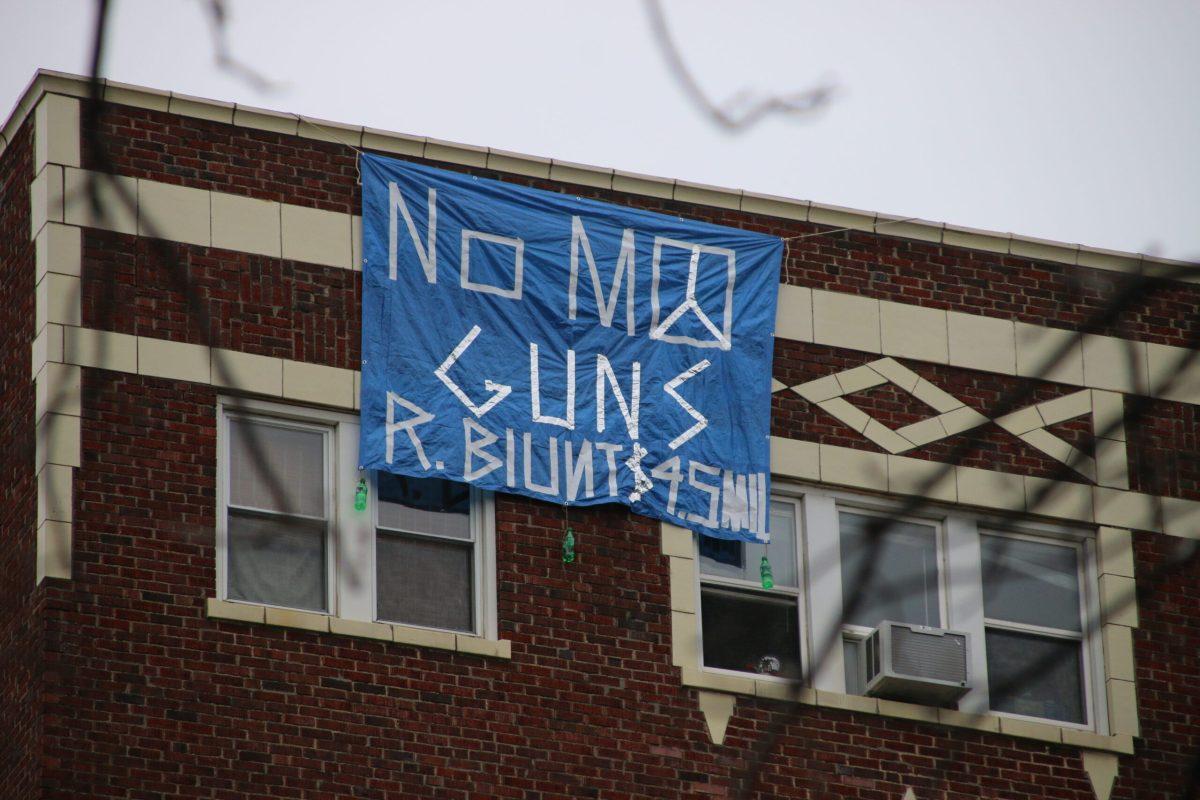_Maddie Niblett is a freshman journalism major at MU. She is an opinions columnist who writes about politics for The Maneater._
On Saturday, March 24, 800,000 people gathered in Washington, D.C., holding signs that read “Protect kids, not guns” and “NRA? More like NR-No Way!” Between speeches, chants of “Vote Them Out” pierced the air, shouted by people who all had one thing in common: a rational fear of guns. The monumental rally was joined by over 450 sister marches nationwide and attended worldwide by about 1.2 million people.
The pro-gun control March for Our Lives demonstration in D.C. was estimated to be the most-attended single-day march in the city’s history (and no, that’s not an “alternative fact”). That alone shows the magnitude of the #NeverAgain movement, but the thing that makes it so distinguished from similar social media campaigns is the people behind it, the organizers and speakers, are all in high school.
Despite being mocked and invalidated for their age by conservatives, the students of Stoneman Douglas High School in Parkland, Florida, have been some of the most influential voices in the gun control conversation in recent weeks. Their social media presence following the mass shooting committed at the school in February has given them the momentum they needed to do what Republicans have never let people do before: start a national conversation about the need for gun control following a mass shooting.
Thanks to some generous grandparents, I was lucky enough to attend the D.C. March for Our Lives. The speakers all called for universal background checks, a ban of all magazines that hold more than 10 rounds of ammunition and a return of the assault weapons ban that was in place until 2004. None of those things have come close to happening yet and probably won’t until the government is no longer controlled by Republicans.
But the fight for stricter gun laws doesn’t end with March for Our Lives. Missouri Republicans are currently trying to pass a law that would eliminate gun-free zones, places where the state mandates that nobody but police and military officials be in possession of firearms. Missouri House Bill 1936 (HB 1936) contains laws regarding guns, including establishing gun-free zones. An amendment to HB 1936, introduced by Republican Rep. Jered Taylor, would allow guns to be carried in places like schools, hospitals, college campuses, bars, airports and sports stadiums. Private businesses like bars could choose to post signs banning firearms on their premises, but state-owned spaces, like public college campuses, would be unable to prevent people from carrying concealed weapons. The bill has passed in the House but has yet to go to the Senate.
Opponents of the bill emphasize the danger that allowing firearms on college campuses could cause. As a college student, I can say with absolute certainty that none of us should have access to a weapon that has the capability to kill multiple people in a matter of seconds. Most of us are too drunk to walk half of the time, and the other half of the time we’re hungover enough to kill someone if we had a gun. Imagine if easily concealed metal death machines were legally added into that mix.
Defendants of HB 1936 claim that allowing anyone to carry any kind of gun anywhere without anyone else’s knowledge would actually be helpful. They repeat what’s become a mantra for pro-gun activists: “The only thing that stops a bad guy with a gun is a good guy with a gun.” As much as I would love to live in a world where the only thing keeping me alive is my ability to murder someone who starts shooting at me in public for no reason, the idea that more legally armed citizens will help eliminate mass shootings is simply untrue in most cases.
According to Mother Jones, a magazine that started a nonprofit group to track mass shootings and other types of gun violence, most cases in which a shooter is stopped by a bystander carrying a weapon are either cases in which the shooter was already done shooting or the bystander was some sort of military personnel or security official. In rare cases where the intervening bystander is your average Joe with a handgun in his back pocket, more often than not they make matters worse and end up getting hurt, sometimes killed.
Admittedly, it is difficult to study and compare mass shootings since every case is unique and each shooter has their own motivations for murdering innocent people, so evidence both for and against legislation regarding mass shootings tends to be anecdotal rather than statistical. But the evidence that we do have suggests that eliminating gun-free zones would just make things more dangerous since normal, untrained gun owners are unprepared to handle a real life-or-death situation with a gun. The answer to the gun question isn’t to increase the amount of guns present in America, but to decrease them. Every day that passes without common-sense gun reform is another day closer to the next mass shooting.














